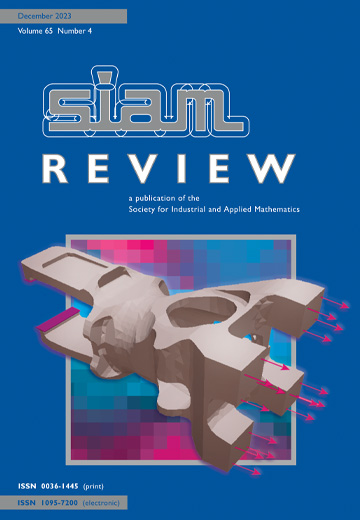Neural ODE Control for Classification, Approximation, and Transport
IF 6.1
1区 数学
Q1 MATHEMATICS, APPLIED
引用次数: 26
Abstract
SIAM Review, Volume 65, Issue 3, Page 735-773, August 2023.We analyze neural ordinary differential equations (NODEs) from a control theoretical perspective to address some of the main properties and paradigms of deep learning (DL), in particular, data classification and universal approximation. These objectives are tackled and achieved from the perspective of the simultaneous control of systems of NODEs. For instance, in the context of classification, each item to be classified corresponds to a different initial datum for the control problem of the NODE, to be classified, all of them by the same common control, to the location (a subdomain of the Euclidean space) associated to each label. Our proofs are genuinely nonlinear and constructive, allowing us to estimate the complexity of the control strategies we develop. The nonlinear nature of the activation functions governing the dynamics of NODEs under consideration plays a key role in our proofs, since it allows deforming half of the phase space while the other half remains invariant, a property that classical models in mechanics do not fulfill. This very property allows us to build elementary controls inducing specific dynamics and transformations whose concatenation, along with properly chosen hyperplanes, allows us to achieve our goals in finitely many steps. The nonlinearity of the dynamics is assumed to be Lipschitz. Therefore, our results apply also in the particular case of the ReLU activation function. We also present the counterparts in the context of the control of neural transport equations, establishing a link between optimal transport and deep neural networks.
分类、逼近和传输的神经ODE控制
SIAM评论,第65卷第3期,第735-773页,2023年8月。我们从控制理论的角度分析了神经常微分方程(NODE),以解决深度学习(DL)的一些主要性质和范式,特别是数据分类和通用近似。这些目标是从NODE系统的同时控制的角度来解决和实现的。例如,在分类的上下文中,每个要分类的项目对应于NODE的控制问题的不同初始数据,所有这些都由相同的公共控制来分类,对应于与每个标签相关联的位置(欧几里得空间的子域)。我们的证明是真正的非线性和建设性的,使我们能够估计我们开发的控制策略的复杂性。控制所考虑的NODE动力学的激活函数的非线性性质在我们的证明中起着关键作用,因为它允许相空间的一半变形,而另一半保持不变,这是力学中经典模型无法实现的特性。正是这种特性使我们能够建立基本的控制,诱导特定的动力学和变换,这些动力学和变换的串联,以及正确选择的超平面,使我们能够在有限的多个步骤中实现我们的目标。假设动力学的非线性是Lipschitz。因此,我们的结果也适用于ReLU激活函数的特定情况。我们还介绍了神经传输方程控制的相关内容,在最优传输和深度神经网络之间建立了联系。
本文章由计算机程序翻译,如有差异,请以英文原文为准。
求助全文
约1分钟内获得全文
求助全文
来源期刊

SIAM Review
数学-应用数学
CiteScore
16.90
自引率
0.00%
发文量
50
期刊介绍:
Survey and Review feature papers that provide an integrative and current viewpoint on important topics in applied or computational mathematics and scientific computing. These papers aim to offer a comprehensive perspective on the subject matter.
Research Spotlights publish concise research papers in applied and computational mathematics that are of interest to a wide range of readers in SIAM Review. The papers in this section present innovative ideas that are clearly explained and motivated. They stand out from regular publications in specific SIAM journals due to their accessibility and potential for widespread and long-lasting influence.
 求助内容:
求助内容: 应助结果提醒方式:
应助结果提醒方式:


